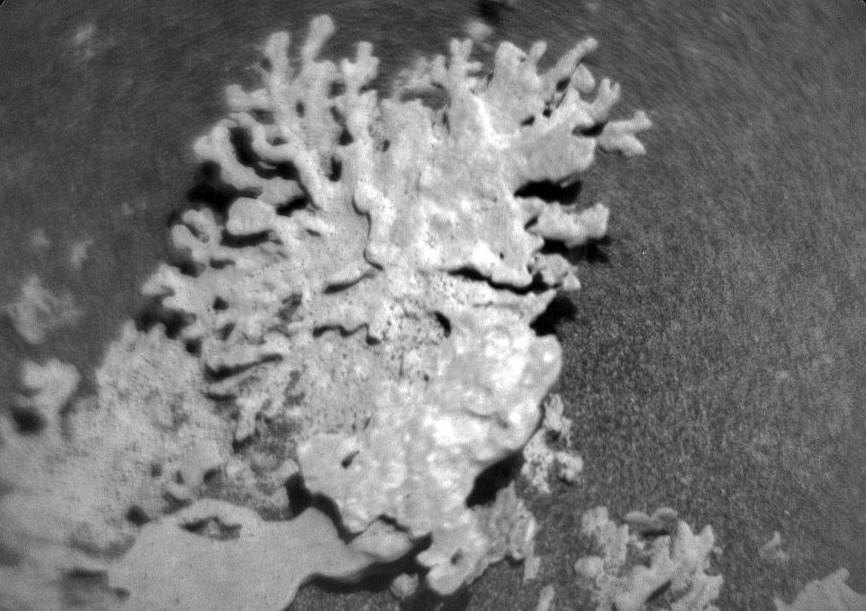
Coral-shaped rock spotted on Mars, NASA shares pic
NASA’s Curiosity Mars rover has made a fascinating discovery on the Martian surface, sending back black and white images of a rock that bears an uncanny resemblance to a piece of coral. The rock, which was found in the Gale Crater, a large impact basin on Mars, is estimated to be around a billion years old. The images, which were captured using the rover’s ChemCam instrument, offer a unique glimpse into the geological history of the Red Planet.
The Gale Crater, where the coral-like rock was discovered, is a significant location on Mars, as it is believed to be one of the most ancient and well-preserved impact basins on the planet. The crater is roughly 96 miles (154 kilometers) in diameter and is thought to have formed as a result of a massive asteroid impact around 3.5 billion years ago. The crater’s floor is a vast, relatively flat plain, with a series of layered rock formations that provide valuable insights into the planet’s geological past.
The coral-shaped rock, which measures approximately 10 inches (25 centimeters) in diameter, is a remarkable find, as it is one of the most unusual and intriguing geological formations to be discovered on Mars to date. The rock’s shape and texture are eerily reminiscent of a piece of coral, with a series of delicate, branching structures that appear to be composed of a fine-grained, sedimentary material.
According to NASA, the coral-like rock is believed to be around a billion years old, making it one of the oldest rocks to be discovered on Mars. The rock’s age is significant, as it provides a unique window into the planet’s geological history, offering insights into the conditions that existed on Mars during a period when the planet was much warmer and more hospitable to life.
The Curiosity rover, which has been exploring the Gale Crater since 2012, has been equipped with a range of scientific instruments designed to study the Martian geology and search for evidence of past or present life on the planet. The rover’s ChemCam instrument, which was used to capture the images of the coral-like rock, is a high-powered laser that can vaporize small samples of rock and analyze their chemical composition.
The ChemCam instrument has been instrumental in helping scientists to understand the geological history of the Gale Crater, and has provided valuable insights into the processes that have shaped the Martian surface over millions of years. The instrument’s ability to analyze the chemical composition of rocks has also allowed scientists to search for signs of past life on Mars, by identifying the presence of biomarkers, which are chemical signatures that are associated with living organisms.
The discovery of the coral-like rock on Mars is a significant find, as it provides further evidence of the planet’s complex geological history. The rock’s age and composition offer valuable insights into the conditions that existed on Mars during a period when the planet was much warmer and more hospitable to life. While the discovery of the rock does not provide conclusive evidence of past life on Mars, it does suggest that the planet may have had a more hospitable environment in the past, which could increase the chances of finding evidence of life on the planet.
In conclusion, the discovery of the coral-shaped rock on Mars is a fascinating find that offers valuable insights into the geological history of the Red Planet. The rock’s age and composition provide a unique window into the conditions that existed on Mars during a period when the planet was much warmer and more hospitable to life. While the discovery of the rock does not provide conclusive evidence of past life on Mars, it does suggest that the planet may have had a more hospitable environment in the past, which could increase the chances of finding evidence of life on the planet.
Source:
https://www.jpl.nasa.gov/images/pia26634-curiositys-chemcam-views-a-rock-shaped-like-coral/






